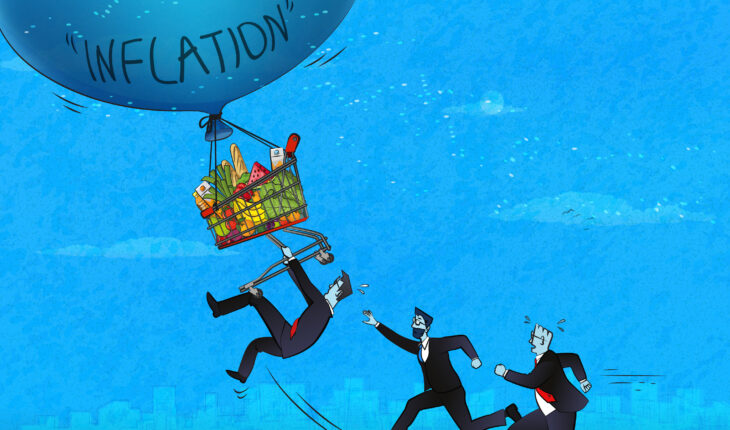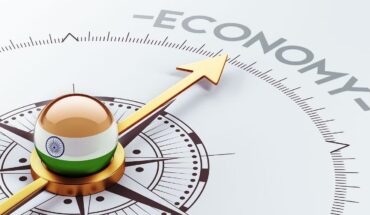
Current Inflation data is providing a breath of fresh air to the Indian economy as both the Consumer Price Index (CPI) and Wholesale Price Index (WPI), have dropped down to low level of 6 percent after a long time. The drop in CPI is seen for the first time since January 2022. Presently WPI is at the level of 5.85 percent as compared to 8.39 percent during the same time last year in 2021. After the release of these figures, it has become interesting to discuss if an Indian consumer has started getting some real relief from the ever-increasing inflation? Or is it just a game of numbers?
Certainly this question is very logical and its solution can be obtained only through analysis. On the face of it, it is fair to say that if there has been a decline in the figures, then surely there must have been some major financial factors behind it. Also, in this context, the changes being made in the monetary policies continuously by the Reserve Bank of India for a long time has also played a major role. It should be noted that during the current financial year, the repo rate has been increased 4 times so far to control the liquidity. However, its direct impact is to control the purchasing power of the consumer, which is in negative trend in terms of economic growth. On the other hand, it is also a fact that the economic benefit of the drop in these latest figures of the index of inflation is not directly seen in the life of the common man on a very large scale.
It is very important to clarify that in the economic life of a common man, the inflation rate data of Consumer Price Index (CPI) is more important than the WPI. Because the change in retail prices of different types of goods is measured at different levels and the National Statistics Office (NSO) publishes this. In this context, it is also very important to point out that both Wholesale Price Index and Consumer Price Index will always complement each other, is not necessary.
In the present times, it is significant that the drop in both is recorded equally. At the global level these days, due to the change in interest policies by the American Fed, the comparatively stronger dollar has weakened the currencies of all the Countries and as a result, the fear of global economic recession is everywhere. Its effect is visible somewhere on the reduction in the inflation figures of WPI. Supporting to the facts of decline in CPI is due to the decrease in the prices of vegetables and fruits these days. The importance of food and beverages are relatively very high in the basket of 6 levels of CPI inflation. With the onset of winter season, the arrival of vegetables and fruits has suddenly very much increased. As a result there is a decrease in the prices and hence, the rate of CPI in the month of November was 5.88 percent. However, the increase in the prices of various pulses, spices and milk shows its own logic in this regard.
The Consumer Price Index definitely presents the impact of inflation in the life of the common man in a very rational way, but it is a great irony that, in the present time for assessing the consumer’s purchase pattern base year is the year 2011-12. Has there been no change in the mindset of the Indian consumer in the last 10 years? It should be noted that the National Statistics Office was to determine the criteria of various levels of the consumer’s purchasing power in the year 2017-18, which has not happened yet, and for this reason even today, the rate of inflation is being calculated on the basis of 10 years old criteria which seems completely impractical and also raises a question on the thinking that how the reduction in the rate of CPI is providing relief to the common man from inflation?
Above all it is important to understand that the Consumer Price Index is a very elaborated criteria for calculating the rate of inflation. In this index, the mindset of a rural consumer and an urban consumer for the purchase of different items is seen. Apart from this, the difference in purchasing mindset of rural and urban consumers in different states of India can also be noticed and understood from this index. At present, the inflation rate of rural areas in 16 states is higher than urban areas, which seems to be a surprising fact but it is a reality. Apart from this, the consumer price index at the national level has been recorded less than 6 percent but in some states like Telangana, Madhya Pradesh, Haryana and Andhra Pradesh it is currently quite high. Currently the CPI in Telangana is currently 7.89 percent, but it did not have much negative impact on the average consumer price index of all the states of the country because Telangana’s weightage in the average of all states is only 3.5 percent. The highest significance or weightage in the rate of inflation of the Consumer Price Index is in the states of Maharashtra and Uttar Pradesh. It is clear from this that if there is an increase or decrease in the prices of food and beverages in urban or rural areas of Maharashtra or Uttar Pradesh, then its huge impact can be seen on the inflation rate of the country. Is it rational?
On the other hand, the Reserve Bank of India, is continuously changing the rates of interest so that the purchasing power of the consumer remains in control. At the initial level, it seems to be a necessary step, but on the basis of economic analysis, it is also essential to understand that the increase in the repo rate increases the “EMI” or monthly installment of the financial loan, whose economic burden comes on very common consumer. Therefore, it is probably not wrong for a common man to think that changes in inflation data do not affect him much. In reality it is a game of numbers.
But it certainly seems logical that both CPI and WPI dropping below 6 per cent indicates a boom in the third quarter GDP rate of Indian economy which can be seen in the time to come.
Dr. P.S. Vohra , Academician, Financial Thinker & Newspaper Columnist , Views are personal






